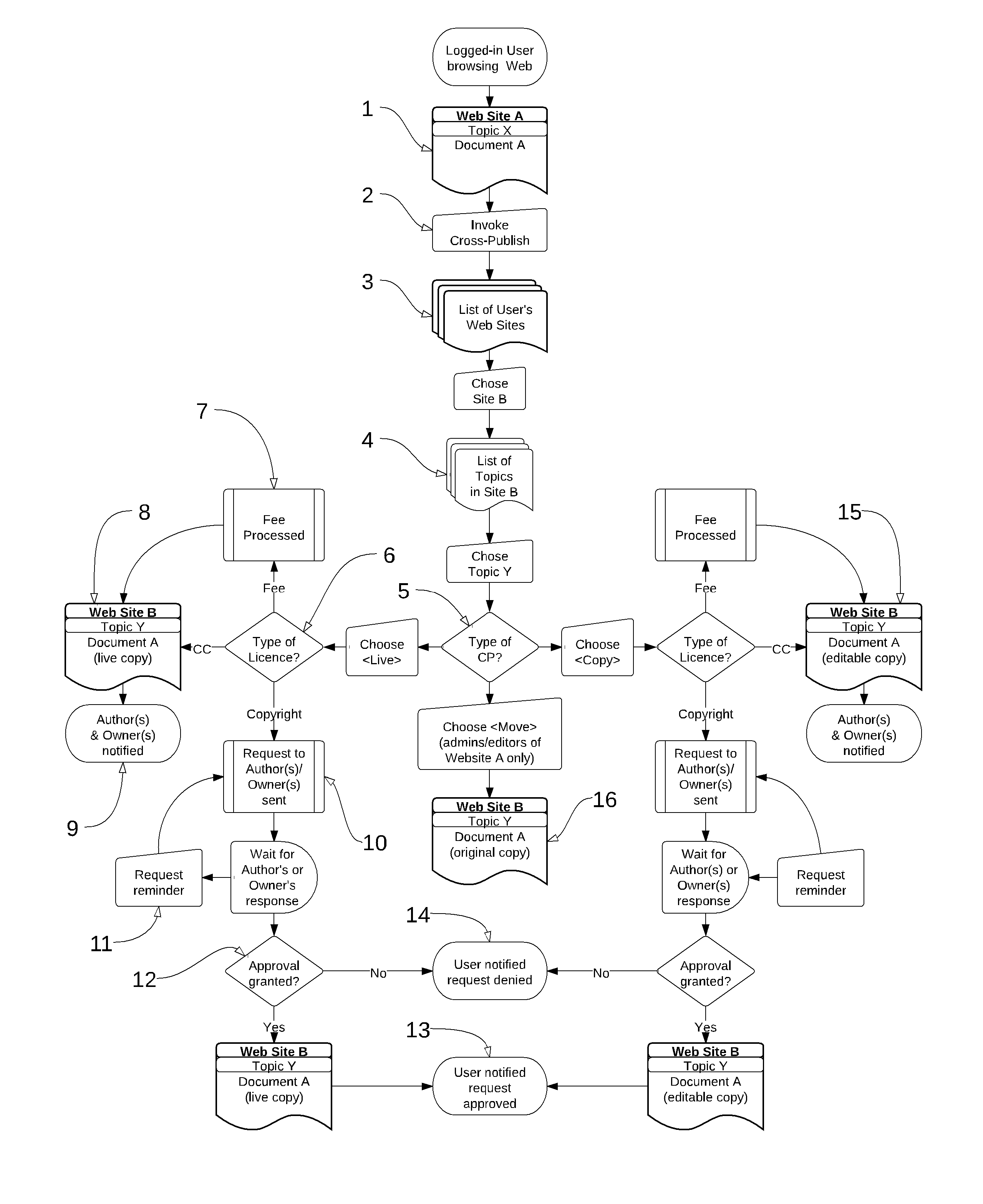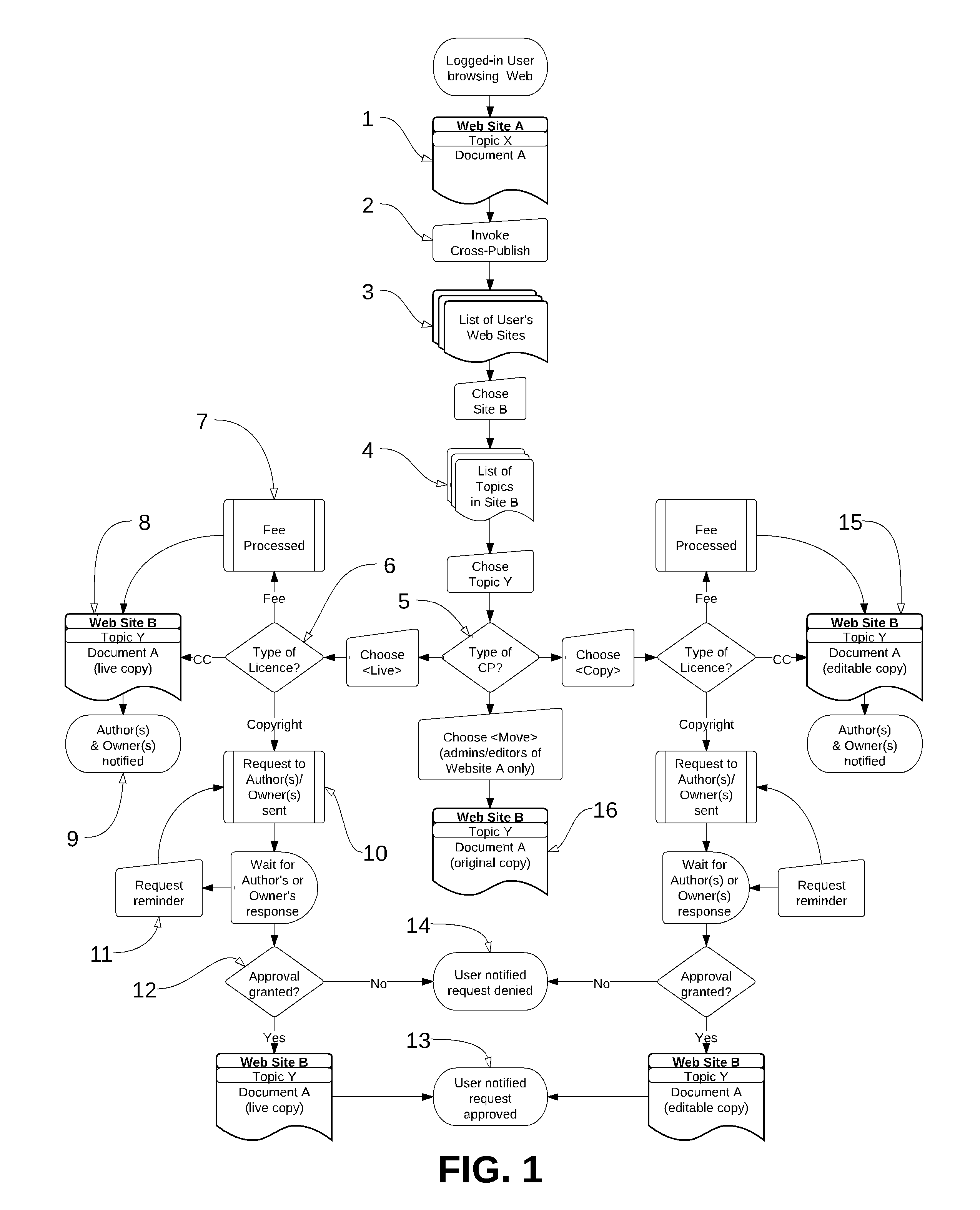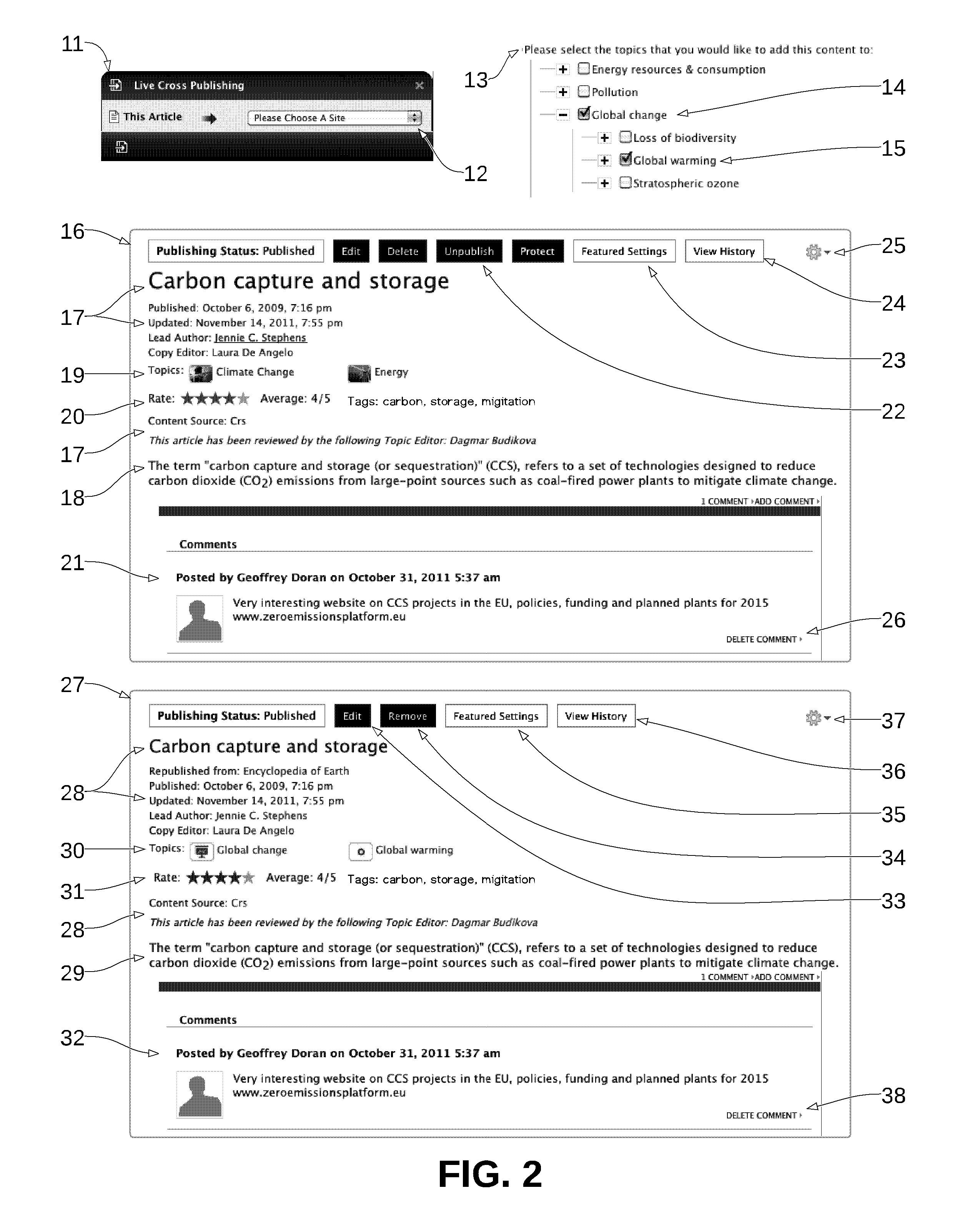System and Method for Dynamic Cross Publishing of Content Across Multiple Sites
a content and multiple site technology, applied in the field of information management, can solve the problems of difficult and expensive production of high-quality content, no simple built-in mechanism for providing, and no simple mechanism for providing. , to achieve the effect of convenient republishing
- Summary
- Abstract
- Description
- Claims
- Application Information
AI Technical Summary
Benefits of technology
Problems solved by technology
Method used
Image
Examples
Embodiment Construction
[0016]Dynamic cross publishing has several embodiments including distributed implementations relying on a Web services framework as well as multi-tenant cloud-based implementations. Distributed embodiments have the advantaged of supporting implementation on a wider variety of existing platforms, but may be more difficult to implement with the full feature set, and by its distributed nature requires data replication / caching on each server to guarantee high reliability. Multi-tenant cloud-based embodiments typically are more straightforward to implement with the full feature set and do not require data replication to achieve high reliability, but do require that all sites be on the same cloud-based implementation. A blended embodiment is also possible; whereby both distributed and cloud based implementations are supported.
[0017]FIG. 1 shows the flow for how dynamic cross publishing is invoked and executed by a logged in user (i.e. a user who's identity is known). The user views a piec...
PUM
 Login to View More
Login to View More Abstract
Description
Claims
Application Information
 Login to View More
Login to View More - R&D
- Intellectual Property
- Life Sciences
- Materials
- Tech Scout
- Unparalleled Data Quality
- Higher Quality Content
- 60% Fewer Hallucinations
Browse by: Latest US Patents, China's latest patents, Technical Efficacy Thesaurus, Application Domain, Technology Topic, Popular Technical Reports.
© 2025 PatSnap. All rights reserved.Legal|Privacy policy|Modern Slavery Act Transparency Statement|Sitemap|About US| Contact US: help@patsnap.com



